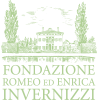Regulatory and helper T-cell subsets in health and disease

Introduction
CD4+ T-cells are central players of adaptive immune responses, because they co-ordinate the activity of several other immune cells such as dendritic cells (DC), B cells and cytotoxic CD8+T-cells. CD4+T-cells can be subdivided into two broad subsets of helper and regulatory cells, which promote and suppress immune responses, respectively. Both regulatory and helper T-cells can produce Interleukin-10 (IL-10), which is a potent anti-inflammatory cytokine but also promotes cytotoxic T-cell responses and B-cell antibody production. Consequently, IL-10 has a dual role in autoimmunity and cancer: On the one hand, it is required to maintain intestinal immune homeostasis and to prevent colitis, but on the other hand it could promote the generation of pathogenic autoantibodies in systemic lupus erythematosus (SLE) or cytotoxic anti-tumor T-cell responses.
Role of IL-.10 producing regulatory T-cells in human immune-mediated diseases
Regulatory T-cells can be sub-divided into the well-defined CD25+Tregs, which express the lineage-defining transcription factor FOXP3, and the enigmatic Tr1-cells, which produce high levels of IL-10. It is unclear whether Tr1-cells represent an independent differentiation lineage or a transient and unstable activation stage. We identified a population of cytotoxic Tr1-like cells in human tissues that produce high levels of IL-10, are generated upon chronic antigenic activation. They stably express the lineage-defining transcription factor EOMES and are probably derived from pro-inflammatory EOMES+Th1-cells. EOMES+Tr1-like-cells are involved in several immune-mediated diseases. Thus, EOMES+Tr1-like cells, but not FOXP3+Tregs, were functionally impaired in systemic lupus erythematosus and in inflammatory bowel diseases (IBDs). Furthermore, they were enriched and clonally expanded in different types of human tumors. Tumour-infiltrating Tr1-like cells were associated with poor prognosis, but also with response to immunotherapy. In multiple sclerosis they were enriched and clonally expended in the cerebrospinal fluid, and they produced IL-10 in brain lesions. However, they were activated by EBV, but failed to respond to myelin-derived self-antigens, possibly explaining why they fail to prevent CNS damage.
Role of human Th17 subsets in immune-mediated diseases
We are also studying Th17-cells, since they drive pathogenic inflammation in several immune-mediated diseases. We found that different human Th17 subsets, which all express the chemokine receptor CCR6, are involved in individual pathologies.
We identified a population of non-polarised CCR6+ central memory T-cells that differentiate spontaneously to Th17-cells upon TCR stimulation, indicating that they represent pre-Th17-cells. They produce IL-10 and are auto-reactive, but possess a context-dependent helper/regulatory function: IL-10 produced by these CCR6+T-cells could inhibit auto-reactive T-cell proliferation induced by immature DC, but also induce IgG production by naive B-cells. They accumulated systemically in patients with systemic lupus erythematosus (SLE) and could promote extrafollicular autoantibody production, suggesting a pathogenic role. In STAT3-deficient patients with Job’s syndrome, Th17 differentiation was arrested at this pre-Th17 stage, and residual CCR6+ cells produced IL-10 instead of IL-17 in response to opportunistic pathogens that cause recurrent infections in these patients. In multiple sclerosis, auto-reactive CCR6+T-cells differentiated instead to Th1/17-cells, which were enriched in the cerebrospinal fluid after an attack and produced encephalitogenic cytokines like GM-CSF. Finally, in the gut we recently identified an IL-23-dependent subset of Th17 effector cells that produced very high levels of IL-17, together with some IFN-, and were associated with intestinal inflammation in Crohn’s Disease. They were activated by adherent-invasive E. Coli, but not by a commensal strain, providing thus a link between the dysbiosis of the intestinal microbiota and Th17-cells in IBDs.
Projects
- Role of the bone marrow in the maintenance of pathogenic or protective T-cell subsets in multiple sclerosis (FISM, Patners: Dr. A. Talone, CNR Rome, Dr. T. Viganò, University/ San Martino Hospital Genoa).
- BEHIND-MS: Bridging EBV-Host ImbalaNce to Disease Onset and Progression in Multiple Sclerosis (EU HORIZON Network HEALTH 2023 DISEASE, Co-ordinator Dr H. J: Delecluse, DKFZ Heidelberg):
- Role of innate immunity in the diverse phenoypes of Job’s syndrome (PRIN Grant P20228W4FJ, Co-ordinator: Prof. Argenton, University Padova)
- Compose LI(L)RA1 ballad: enlighten its role in cutaneous lupus erythematosus (Collaboration with Prof. M. Gerosa, Orthopedic Hospital G. Pini, Milan)
- Molecular properties of single antigen-specific T-cells in rheumatoid arthritis (PRIN Grant 20225T5M2F, Collaboration with Prof. F. Ingegnoli, Orthopedic Hospital G. Pini, Milan)
- SLO ORGANOIDS: Organoids of secondary lymphoid organs. (PNRR-National Centre for Gene Therapy and Drugs based on RNA, Spoke 9, WP9.3.)
- NEURO-Tr1: Role of cytotoxic T-cell subsets in neurodegenerative diseases (PNRR, MNESYS, Spoke 7, Bando a cascata)
- Targeting Tr1-cells in cancer (IG, AIRC).
- Role of CD4+T-cell subsets in aneurysmal subarachnoid hemorrhage (Cariplo, C. Vasco).
- Validation of novel prognostic factors in blood of lymphangioleiomyomatosis (LAM) patients (AST, C. Vasco).
Team
| Nome / Name | Ruolo / Role | |
|---|---|---|
| Petra Dadova | Post Doc | dadova@ingm.org |
| Camilla Righetti | Graduate Student | righetti@ingm.org |
| Nadia Pulvirenti | Post Doc | pulvirenti@ingm.org |
| Maria Chiara Vasco | Staff Scientist | vasco@ingm.org |
| Sara Maioli | Research Fellow | maioli@ingm.org |
| Carmen Faggiano | Research Fellow | faggiano@ingm.org |
| Giorgia Garbeglio | Research Fellow | garbeglio@ingm.org |
| Yasmin Vahidi | Research Fellow | vahidi@ingm.org |
Publications
- An intestinal Th17 subset is associated with inflammation in Crohn’s Disease and activated by adherent-invasive Escherichia coli (AIEC).
Paroni M, Leccese G, Ranzani V, Moschetti G, Chiara M, Perillo F, Ferri S, Clemente F, Noviello D, Conforti FS, Ferrero S, Karnani B, Bosotti R, Vasco C, Curti S, Crosti MC, Gruarin P, Rossetti G, Conte MP, Vecchi M, Pagani M, Landini P, Facciotti F, Abrignani S, Caprioli F, Geginat J.
J Crohns Colitis. 2023 Jul 18:jjad119. - SARS-COV-2 specific t-cells in patients with thyroid disorders related to COVID-19 are enriched in the thyroid and acquire a tissue-resident memory phenotype
Silvestri Y, Clemente F, Moschetti G, Maioli S, Carelli E, Espadas de Arias Al, Torelli R, Longhi E, De Feo T, Crosti MC, Sarnicola ML, Salvi M, Mantovani G, Arosio M, Bombaci M, Pesce E, Grifantini R, Abrignani S, Geginat J, Muller I.
Clinical Immunology, 2023. Available online 13 July 2023, 109684 - Eomesodermin-expressing type 1 regulatory (EOMES+ Tr1)-like T cells: Basic biology and role in immune-mediated diseases.
Geginat J, Vasco C, Gruarin P, Bonnal R, Rossetti G, Silvestri Y, Carelli E, Pulvirenti N, Scantamburlo M, Moschetti G, Clemente F, Grassi F, Monticelli S, Pagani M, Abrignani S.
Eur J Immunol. 2023 Jan 18:e2149775. - Deep Phenotyping of T-Cells Derived From the Aneurysm Wall in a Pediatric Case of Subarachnoid Hemorrhage.
Moschetti G, Vasco C, Clemente F, Galeota E, Carbonara M, Pluderi M, Locatelli M, Stocchetti N, Abrignani S, Zanier ER, Ortolano F, Zoerle T, Geginat J.
Front Immunol. 2022 May 31;13:866558. - Ex vivo microRNA and gene expression profiling of human Tr1-like cells suggests a role for miR-92a and -125a in the regulation of EOMES and IL-10R
De Simone M, Chirichella M, Emming S, Mazzara S, Ranzani V, Gruarin P, Moschetti G, Pulvirenti N, Maglie S, Vasco C, Crosti MC, Rossetti G, Pagani M, Abrignani S, Monticelli S, Geginat J.
Eur J Immunol. 2021 Sep 15. doi: 10.1002/eji.202149315. Online ahead of print. - Clonally expanded EOMES+ Tr1-like cells in primary and metastatic tumors are associated with disease progression.
Bonnal RJP, Rossetti G, Lugli E, De Simone M, Gruarin P, Brummelman J, Drufuca L, Passaro M, Bason R, Gervasoni F, Della Chiara G, D’Oria C, Martinovic M, Curti S, Ranzani V, Cordiglieri C, Alvisi G, Mazza EMC, Oliveto S, Silvestri Y, Carelli E, Mazzara S, Bosotti R, Sarnicola ML, Godano C, Bevilacqua V, Lorenzo M, Siena S, Bonoldi E, Sartore-Bianchi A, Amatu A, Veronesi G, Novellis P, Alloisio M, Giani A, Zucchini N, Opocher E, Ceretti AP, Mariani N, Biffo S, Prati D, Bardelli A, Geginat J, Lanzavecchia A, Abrignani S, Pagani M.
Nat Immunol. 2021 May 20. doi: 10.1038/s41590-021-00930-4. Online ahead of print - Evidence for a pathogenic role of extrafollicular, IL-10–producing CCR6+B helper T cells in systemic lupus erythematosus
Facciotti F, Larghi P, Bosotti R, Vasco C, Gagliani N, Cordiglieri C, Mazzara S, Ranzani V, Rottoli E, Curti S, Penatti A, Karnani B, Kobayashi Y, Crosti M, Bombaci M, van Hamburg JP, Rossetti G, Gualtierotti R, Gerosa M, Gatti S, Torretta S, Pignataro L, Tas SW, Abrignani S, Pagani M, Grassi F, Meroni PL, Flavell RA, and Geginat J.
PNAS first published March 17,2020; http://doi. org/10.1073/pnas.1917834117. - IL-10 producing regulatory and helper T-cells in systemic lupus erythematosus.
Geginat J, Vasco M, Gerosa M, Tas SW, Pagani M, Grassi F, Flavell RA, Meroni P, Abrignani S.
Semin Immunol. (2019) - Introduction to the Special Issue: Interleukin-10 “The surprising twists and turns of an anti-inflammatory cytokine on its way to the clinic”.
Geginat J.
Semin Immunol. 2019 Aug;44:101343. - Eomesodermin controls a unique differentiation program in human IL-10 and IFN-γ coproducing regulatory T cells.
Gruarin P, Maglie S, De Simone M, Häringer B, Vasco C, Ranzani V, Bosotti R, Noddings JS, Larghi P, Facciotti F, Sarnicola ML, Martinovic M, Crosti M, Moro M, Rossi RL, Bernardo ME, Caprioli F, Locatelli F, Rossetti G, Abrignani S, Pagani M, Geginat J.
Eur J Immunol. 2019 Jan;49(1):96-111. - Intestinal IFN-γ-producing Tr1-cells co-express CCR5 and PD-1, and down-regulate IL-10 in the inflamed gut of IBD patients.
Alfen JS, Larghi P, Facciotti F, Gagliani N, Bosotti R, Paroni M, Maglie S, Gruarin P, Vasco CM, Ranzani V, Frusteri C, Iseppon A, Moro M, Crosti MC, Gatti S, Pagani M, Caprioli F, Abrignani S, Flavell RA, Geginat J.
J Allergy Clin Immunol (2018) - The Enigmatic Role of Viruses in Multiple Sclerosis: Molecular Mimicry or Disturbed Immune Surveillance?
Geginat J, Paroni M, Pagani M, Galimberti D, De Francesco R, Scarpini E, Abrignani S.
Trends Immunol (2017) 38:498-512 - Recognition of viral and self-antigens by TH1 and TH1/TH17 central memory cells in patients with multiple sclerosis reveals distinct roles in immune surveillance and relapses.
Paroni M, Maltese V, De Simone M, Ranzani V, Larghi P, Fenoglio C, Pietroboni AM, De Riz MA, Crosti MC, Maglie S, Moro M, Caprioli F, Rossi R, Rossetti G, Galimberti D, Pagani M, Scarpini E, Abrignani S, Geginat J.
J Allergy Clin Immunol (2017) 140:797-808 - IL-10-producing forkhead box protein 3-negative regulatory T cells inhibit B-cell responses and are involved in systemic lupus erythematosus.
Facciotti F, Gagliani N, Haringer B, Alfen JS, Penatti A, Maglie S, Paroni M, Iseppon A, Moro M, Crosti MC, Stolzel K, Romagnani C, Moroni G, Ingegnoli F, Torretta S, Pignataro L, Annoni A, Russo F, Pagani M, Abrignani S, Meroni P, Flavell R, Geginat J.
J Allergy Clin Immunol (2016) 137:318-321 e5 - The light and the dark sides of Interleukin-10 in immune-mediated diseases and cancer.
Geginat J, Larghi P, Paroni M, Nizzoli G, Penatti A, Pagani M, Gagliani N, Meroni P, Abrignani S, Flavell RA.
Cytokine Growth Factor Rev (2016) 30:87-93 - IL-10 promotes homeostatic proliferation of human CD8(+) memory T cells and, when produced by CD1c(+) DCs, shapes naive CD8(+) T-cell priming.
Nizzoli G, Larghi P, Paroni M, Crosti MC, Moro M, Neddermann P, Caprioli F, Pagani M, De Francesco R, Abrignani S, Geginat J.
Eur J Immunol (2016) 46:1622-32 - Signal Strength and Metabolic Requirements Control Cytokine-Induced Th17 Differentiation of Uncommitted Human T Cells.
Kastirr I, Crosti M, Maglie S, Paroni M, Steckel B, Moro M, Pagani M, Abrignani S, Geginat J.
J Immunol (2015) 195:3617-27 - IL-21 is a central memory T cell-associated cytokine that inhibits the generation of pathogenic Th1/17 effector cells.
Kastirr I, Maglie S, Paroni M, Alfen JS, Nizzoli G, Sugliano E, Crosti MC, Moro M, Steckel B, Steinfelder S, Stolzel K, Romagnani C, Botti F, Caprioli F, Pagani M, Abrignani S, Geginat J.
J Immunol (2014) 193:3322-31 - The CD4-centered universe of human T cell subsets.
Geginat J, Paroni M, Facciotti F, Gruarin P, Kastirr I, Caprioli F, Pagani M, Abrignani S.
Semin Immunol (2013) 25:252-62 - Human CD1c+ dendritic cells secrete high levels of IL-12 and potently prime cytotoxic T-cell responses.
Nizzoli G, Krietsch J, Weick A, Steinfelder S, Facciotti F, Gruarin P, Bianco A, Steckel B, Moro M, Crosti M, Romagnani C, Stolzel K, Torretta S, Pignataro L, Scheibenbogen C, Neddermann P, De Francesco R, Abrignani S, Geginat J.
Blood (2013) 122:932-42 - CCR6 is expressed on an IL-10-producing, autoreactive memory T cell population with context-dependent regulatory function.
Rivino L, Gruarin P, Haringer B, Steinfelder S, Lozza L, Steckel B, Weick A, Sugliano E, Jarrossay D, Kuhl AA, Loddenkemper C, Abrignani S, Sallusto F, Lanzavecchia A, Geginat J.
J Exp Med (2010) 207:565-77 - Identification and characterization of IL-10/IFN-gamma-producing effector-like T cells with regulatory function in human blood.
Haringer B, Lozza L, Steckel B, Geginat J.
J Exp Med (2009) 206:1009-17






